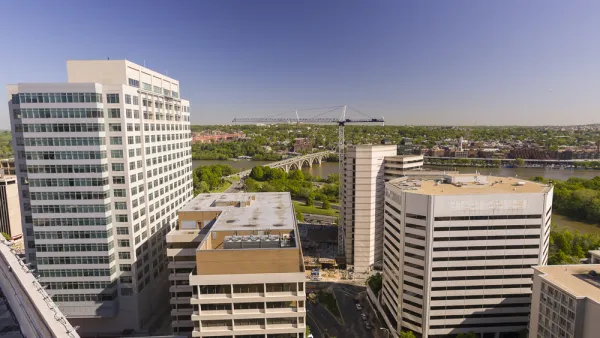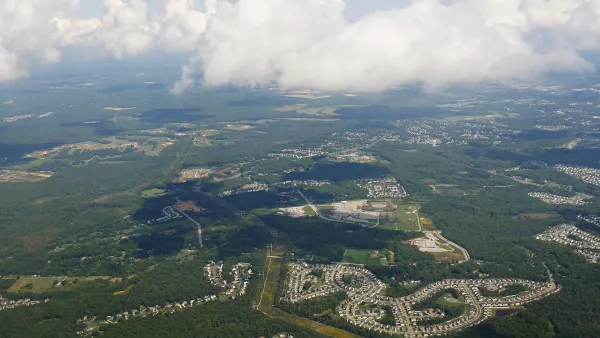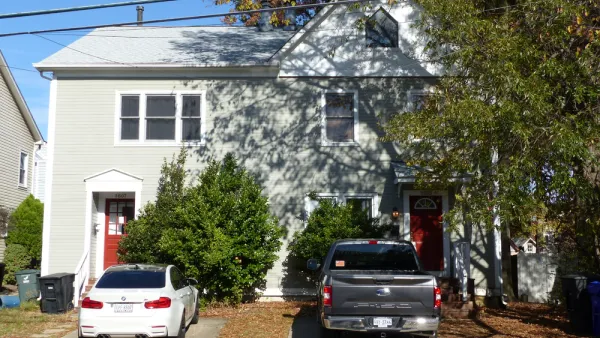The successes of Arlington, Virginia as a suburb have been discussed by planners and urbanists before, but the model has taken on new meaning as the current urban boom send ripple effect out into nearby suburbs like Long Island and Palo Alto.

An article by Henry Grabar details the success of Arlington, Virginia in implementing the benefits of urban life, while also limiting some of its negative impacts: "Despite the influx of tens of thousands of workers and residents, despite the transformation of this sleepy suburb into a mid-size city, traffic has thinned."
"In essence, Arlington has shown that the mistakes of American suburban development can be corrected within a few decades." And how'd it do that? "[Without] citizens’ willingness to support high-density zones, Arlington would still look much as it did in the Kennedy administration."
Here's how Grabar describes some of the planning choices that lead to Arlington's success. "Around the new Metro stops, the county devised a series of “bull’s-eye” plans for high-density, mixed-use developments. Between 1970 and 2000, the Rosslyn-Ballston corridor— just two square miles — added 15 million square feet of office space and 15,000 residential units. Adding in the Metro corridor in nearby Crystal City, Arlington’s seven “station sectors” produce half of the county’s real estate revenue from just 7 percent of its area. It may be the only American suburban district where fewer than half of residents drive to work."
Among the background reportage driving Grabar's Salon story comes from an article by Canaan Merchant for Greater Greater Washington, which details the statistics behind Arlington's reduction of vehicle traffic and its increased use of transit (compared to Grabar, who builds the narrative of how Arlington got to its unique position). Summing up how Arlington achieved the results detailed in the post, however, Merchant says, "Arlington has embraced transit-oriented development and walkability for a long time, but in the 1970s and '80s when the county was originally debating its plans, some of Arlington's choices seemed like risky moves."
Grabar's larger, political point, is pointed toward the NIMBY culture of the suburbs surrounding cities like San Francisco and New York City: "But without a doubt, there’s one lesson whose import will resonate with suburbanites from Huntington to Palo Alto: No suburb can urbanize without the support of its residents."
FULL STORY: The suburb of the future is here

Analysis: Cybertruck Fatality Rate Far Exceeds That of Ford Pinto
The Tesla Cybertruck was recalled seven times last year.

National Parks Layoffs Will Cause Communities to Lose Billions
Thousands of essential park workers were laid off this week, just before the busy spring break season.

Retro-silient?: America’s First “Eco-burb,” The Woodlands Turns 50
A master-planned community north of Houston offers lessons on green infrastructure and resilient design, but falls short of its founder’s lofty affordability and walkability goals.

Test News Post 1
This is a summary

Analysis: Cybertruck Fatality Rate Far Exceeds That of Ford Pinto
The Tesla Cybertruck was recalled seven times last year.

Test News Headline 46
Test for the image on the front page.
Urban Design for Planners 1: Software Tools
This six-course series explores essential urban design concepts using open source software and equips planners with the tools they need to participate fully in the urban design process.
Planning for Universal Design
Learn the tools for implementing Universal Design in planning regulations.
EMC Planning Group, Inc.
Planetizen
Planetizen
Mpact (formerly Rail~Volution)
Great Falls Development Authority, Inc.
HUDs Office of Policy Development and Research
NYU Wagner Graduate School of Public Service




























